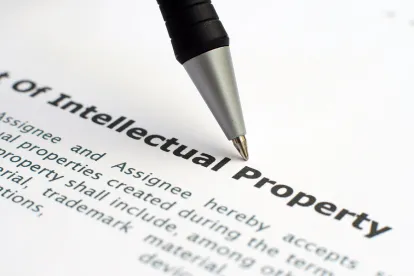On December 27, 2020, the Trademark Modernization Act (TMA) became law as part of the Consolidated Appropriations Act spending bill.1 Despite its name, the TMA impacts not only trademark law, but also false advertising law. The TMA amends the Lanham Act — the federal statute covering both trademarks and false advertising — in very significant ways.
Among other things, the TMA provides a nationwide presumption of irreparable harm in favor of plaintiffs seeking injunctive relief in trademark and false advertising claims under the Lanham Act.2 That presumption applies when: (1) a plaintiff seeking a preliminary injunction or temporary restraining order demonstrates a likelihood of success in proving its trademark or false advertising claim; or (2) a plaintiff seeking a permanent injunction proves its trademark or false advertising claim. The presumption is rebuttable by the defendant, although “proving a negative,” such as the lack of irreparable harm to goodwill, can be challenging. As such, the likely net result of the TMA is a lower bar for plaintiffs seeking injunctive relief in Lanham Act cases.
The TMA’s nationwide presumption of irreparable harm resolves a circuit split that arose after the US Supreme Court’s eBay, Inc. v. MercExchange decision, which eliminated a presumption of irreparable harm in patent cases.3 Some courts applied eBay to trademark and false advertising cases. In such jurisdictions, plaintiffs needed to provide concrete evidence of irreparable harm to obtain injunctive relief. That was difficult to do in Lanham Act cases, where harm to intangible goodwill may be the primary harm. Now, thanks to the TMA, all courts throughout the country must apply a rebuttable presumption of irreparable harm in trademark and false advertising cases under the Lanham Act.
Of note, the TMA’s presumption of irreparable harm for injunctive relief does not directly address another circuit split, namely, whether similar presumptions apply to other elements of a false advertising cause of action. For example, some courts apply presumptions of deception, injury and causation depending on the nature of the challenged advertising claims (e.g., literally false comparative claims naming a competitor) and the requested remedies (e.g., monetary damages or equitable relief). Because irreparable harm (for injunctive relief) and injury/causation (for the prima facie case) have been conflated at times, the TMA may influence application of other presumptions in false advertising cases. As of the time of writing this article, we did not locate any federal court decisions applying the TMA in false advertising cases. But this is something to watch.
-
https://www.congress.gov/116/crpt/hrpt645/CRPT-116hrpt645.pdf.
-
The text of the TMA and its legislative history focus on trademark claims and do not expressly refer to false advertising claims. However, the TMA amends Section 34 of the Lanham Act, which in turn addresses injunctive relief sought under, inter alia, Section 43(a), which includes false advertising claims.
-
547 U.S. 388 (2006).




 />i
/>i

